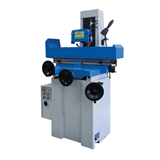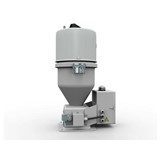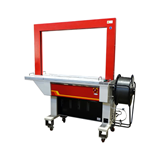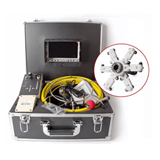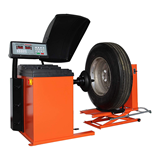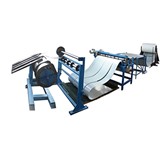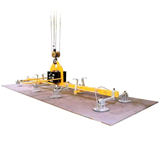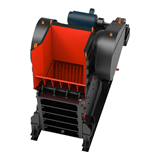Discover the latest Backhoe Loader prices and buying tips in Australia. Learn about types, features, costs, and financing options to make the best purchasing decision.
Key takeaways
- Backhoe loader prices in Australia start from $60,000 for compact models and can exceed $250,000 for large, high-spec machines.
- Main types include centre mount (standard) and side shift backhoes, with side shift models offering better manoeuvrability in urban environments.
- Operating weight ranges from 6,000 kg to 10,000+ kg, impacting power, reach, and cost.
- Annual maintenance costs can range from $2,000 to $6,000, depending on usage and parts.
- Popular brands in Australia include CAT, JCB, Case, Komatsu, and John Deere.
- Financing options such as chattel mortgage, operating lease, and hire purchase are widely available.
- Compliance with Australian Design Rules (ADRs) and relevant Work Health and Safety (WHS) requirements is mandatory.
- High resale value: Premium backhoes can retain up to 60% of their value after 5 years with proper maintenance.
Introduction
Whether you're working in construction, agriculture, mining, or civil works, a backhoe loader is one of the most versatile pieces of equipment you can own. Combining the functionality of an excavator and a front-end loader, these machines can dig, load, backfill, and more. However, with price tags reaching well over $150,000, it's essential to make an informed choice that suits your workload, budget, and compliance obligations in Australia.
This detailed guide will walk you through everything you need to know about buying a backhoe loader in Australia—from types, pricing, and parts to maintenance, financing, and certification.
Types of backhoe loaders
1. Centre mount backhoe loaders (fixed boom)
- Most common type in Australia.
- Ideal for heavy-duty digging and backfilling.
- Offers better stability on uneven terrain.
2. Side shift backhoe loaders
- Boom can slide side to side for better flexibility.
- Favoured in urban and tight work sites.
- Easier to work alongside walls and structures.
3. Compact backhoe loaders
- Smaller frame for light-duty tasks.
- Great for landscaping, small-scale civil jobs.
- Prices start from $60,000.
4. Extendable dipper backhoes
- Allow for greater digging depth without repositioning.
- Popular in trenching and pipe-laying applications.
Backhoe loader prices in Australia
Prices for backhoe loaders vary significantly depending on size, brand, condition, and attachments included. Here’s a breakdown:
Mini backhoe loaders
- Ideal for residential and small-scale projects
- Prices range from $55,000 to $80,000 for new models
- Used models can start from $35,000
Standard backhoe loaders
- Suitable for most medium- to large-scale construction jobs
- New models range between $85,000 and $150,000
- Used units often cost $50,000 to $100,000, depending on condition and hours
Premium or high-capacity models
- Includes models with extra features like enclosed cabs, advanced hydraulics, or telescopic booms
- Expect to pay $150,000 to $250,000+
Operation and functionality
Backhoe loaders are highly versatile machines offering:
- Digging depths up to 5.5 metres for large models.
- Load capacities between 1,000 kg to 3,500 kg.
- Multi-functionality: trenching, backfilling, lifting, loading, snow removal, and even demolition with the right attachments.
- 4-in-1 buckets, hydraulic hammers, augers, and broom attachments increase flexibility.
Maintenance and parts
Routine maintenance is essential for reliability and resale value:
Regular maintenance tasks:
- Hydraulic fluid checks and replacement
- Filter and oil changes every 250–500 hours
- Tyre inspections and pressure checks
- Greasing joints and linkages
Annual maintenance costs:
- Light use: $2,000–$3,000
- Heavy use: $4,000–$6,000
Parts availability:
- Widely available across Australia for major brands (CAT, JCB, Komatsu)
- Aftermarket and OEM options exist for most parts
Financing options
Most Australian suppliers and lenders offer multiple finance solutions:
- Chattel mortgage: Retain ownership while claiming GST and depreciation.
- Hire purchase: Pay in instalments, own the machine at the end.
- Operating lease: Off-balance-sheet option; good for short-term use.
- Low-doc loans: For ABN holders with limited documentation.
Pro tip: Use backhoe loader finance calculators or speak to an equipment finance broker to compare repayments based on your cash flow.
Warranties
Warranty offerings vary by manufacturer:
- Standard warranty: 12–24 months or 1,500–3,000 hours, whichever comes first.
- Extended warranties: Available for up to 5 years.
- Inclusions: Look for coverage of major components like engine, transmission, hydraulics.
Compliance and certification in Australia
When buying a backhoe loader in Australia, ensure:
- ADR compliance: Machines must adhere to Australian Design Rules where road registration is required.
- WHS compliance: Work Health and Safety regulations vary by state. Machines should include ROPS/FOPS-certified cabins.
- Operator licensing: Operators must hold the appropriate earthmoving equipment licence (typically a Verification of Competency).
- Dealer documentation: Suppliers should provide compliance certificates and user manuals.
Site preparation and fit-out considerations
Before your backhoe loader arrives, proper site preparation ensures a smooth delivery and safe setup. Here’s what to consider:
- Access for transport: Make sure your site has room for a float truck or tilt tray. Backhoe loaders typically arrive on a trailer and may require 3–4 metres of clearance width and stable ground for unloading.
- Surface conditions: Level, compacted surfaces reduce the risk of machinery sinking or tipping. Avoid soft or wet ground.
- Fuel and power access: Ensure diesel is on-site or easily accessible. If you’re investing in hybrid or electric models, plan for compatible charging points.
- Storage and security: Designate a safe area for overnight storage and install locks or GPS tracking if needed.
Accessories and attachments compatibility
Choosing the right attachments can significantly increase your backhoe loader’s ROI:
- Common attachments:
- 4-in-1 buckets ($4,000–$7,000)
- Hydraulic augers ($3,000–$5,000)
- Rock breakers ($6,000–$10,000)
- Pallet forks ($2,500–$4,000)
- Compatibility tips:
- Stick to the same brand or verify attachment mounting systems (e.g. quick hitch compatibility)
- Ask about auxiliary hydraulic flow requirements
- Ensure your hydraulic lines are protected and well-routed
Common questions backhoe loader buyers ask
1. How do I choose the right size backhoe for my business?
Consider the typical job site conditions, digging depth, and load requirements. Compact models are great for urban areas, while larger models handle heavy-duty work.
2. Should I buy new or used?
New machines come with warranties and modern features but cost more. Used units can save 30–50% upfront but may incur higher maintenance costs.
3. What’s the lifespan of a backhoe loader?
With proper care, a quality machine can last 7,000 to 12,000 hours or 10–15 years.
4. Are attachments interchangeable?
Yes, but only if compatible with your backhoe’s hydraulic system and coupler type. Always check with the supplier.
5. What safety features should I look for?
ROPS/FOPS cabins, seatbelts, rear cameras, audible alarms, anti-slip steps, and emergency stops are all essential.
Final thoughts
Buying a backhoe loader in Australia is a major investment that requires consideration of machine type, pricing, maintenance needs, compliance, and financing. Whether you’re upgrading your fleet or starting fresh, understanding these factors will help you choose a model that delivers performance, safety, and value for years to come.




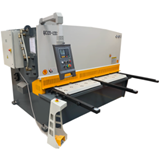

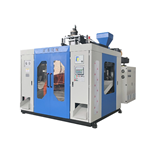

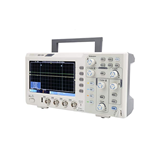

-160x160-state_article-rel-cat.png)
